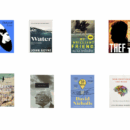Guess what, Starbucks did bounce back
“Howard Schultz (returned) in January 2008 to run the firm he had made great but which had by then entered a seemingly inescapable spiral of decline. Investors approve: having fallen below $8 last November, down from an all-time high of nearly $40 in 2006, shares in Starbucks have risen above $20, a bit higher than they were when Mr Schultz took charge for the second time. So far this year, they are up by nearly 120%, while the S&P 500 index is not quite one-quarter higher.
Mr Schultz has left no bean unturned in his effort to turn Starbucks around. His successor as chief executive, Jim Donald, had overseen a suicidally rapid worldwide expansion of the chain.”
Economist.com (29 September 2009)
It’s time to say I told you so.
Back in August 2008, I wrote on this page that I backed Starbucks to bounce back. This was a tough call at the time: the once soaring firm had just closed 600 stores and laid off a big chunk of workers. It had clocked up its first-ever quarterly loss. My American friends laughed, telling me that Starbucks was mockingly called “Fourbucks”, and that its expensive coffee was history. People would rather buy their coffee at McDonald’s now, I was told.
I didn’t believe them. Why? Because Starbucks founder, Howard Schultz, was back at the helm. If ever a man has built a company on sheer passion, it is he. His book, Pour Your Heart Into It, says it all. This is one of those rare leaders who cares less about enriching himself and more about creating a company that people love.
What has he done since coming back? He has reversed the decline presided over by his hapless successor. Poorly performing outlets (most of which were new and badly located) were closed without much further thought. The central processes in the stores – how coffee is made and served – were reviewed with vigour, reducing wastage and saving $500 million in annual costs.
More importantly, staff were refocused on the customer. Every store in the chain was closed for a day so that staff could be retrained in the basics: making coffee well and serving it with zest. Cleanliness and demeanour were brought back to forefront. The staff themselves were not neglected; their famously generous healthcare benefits (a big deal in the USA) were not touched, even though reducing them would have led to massive savings. And 10,000 store managers were treated to a grand pep event where they were entertained by U2’s Bono, no less.
Business is simple. Happy employees serving happy customers. That is the holy grail. So simple, and yet so difficult to pull off. A genuinely enthusiastic and determined leader with those values will only succeed. Starbucks had its wobbly moment; all companies do. But it went back to basics and found its groove again. Analysts are now giving ‘buy’ recommendations again.
Starbuck’s competitive advantage lies in the distinct ways in which it relates to its employees and its customers. Those ways are difficult to copy. They are more psychological than procedural; more a philosophy than a process. Those ways allow the firm to keep charging four bucks per cup in the middle of a recession. You have to admire a company that is able to charge that much for a simple cup of coffee that costs it a few cents to make – and keep doing it.
Our own restaurants and coffee houses in Kenya have much to learn. They are characterised by surly and inept staff, inconsistent product quality and an ambience that fades after just six months of operation. There is no passion from the top. Far from pouring their hearts into these businesses, proprietors want only to pour the money out of them.

Buy Sunny Bindra's new book
The X in CX
here »
Popular Posts
- Make this your year of being boringJanuary 4, 2026
- My books of the yearDecember 14, 2025
- Confessions of an explaining personDecember 7, 2025
- Here’s why you should become foolishNovember 30, 2025
- How to listen, really listenNovember 16, 2025















